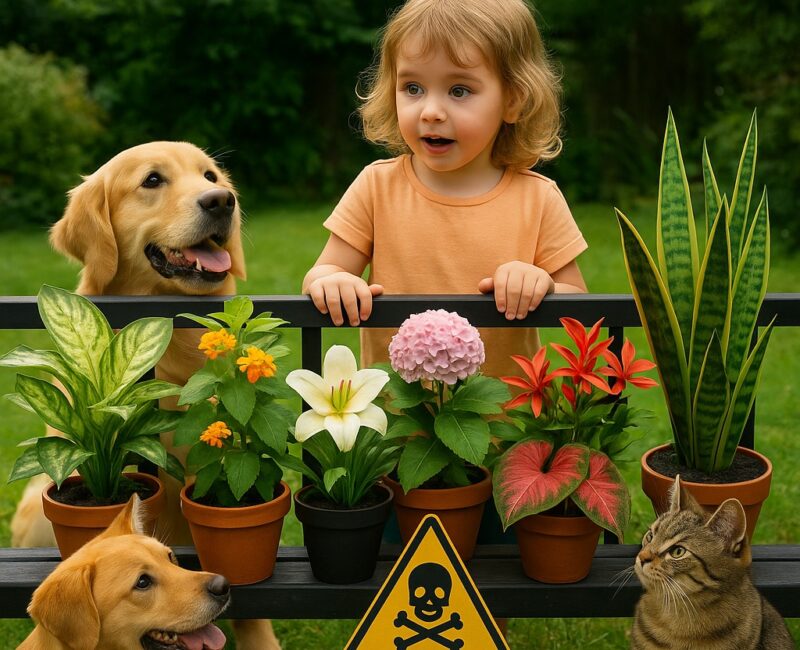As a professional horticulturist with over 15 years of experience in botanical safety, I’ve witnessed too many preventable emergencies involving plant poisoning. The irony is heartbreaking: the very plants we bring home to beautify our spaces can become silent threats to the most vulnerable members of our households—our children and beloved pets.
Every year, the ASPCA Animal Poison Control Center receives over 200,000 calls related to pet poisonings, with plants accounting for approximately 5% of these cases. While that percentage might seem small, it represents thousands of preventable incidents where curious cats, playful puppies, and exploring toddlers come into contact with toxic vegetation.
Read more – Why Your Houseplants Keep Dying And 7 Fixes Experts Swear By
The challenge isn’t just about knowing which plants are dangerous—it’s about understanding that many of the most popular houseplants and garden specimens harbor serious toxicity. These aren’t exotic, rare species; they’re the plants you’ll find at every garden center, decorating offices, and gracing neighborhood landscapes.
The Science Behind Plant Toxicity: What Every Pet Owner and Parent Needs to Know
Before we dive into the specific plants to avoid, understanding the mechanisms of plant toxicity helps you recognize danger and respond appropriately during emergencies.
Common Toxic Compounds Found in Ornamental Plants
Cardiac Glycosides: These compounds interfere with the heart’s electrical system, potentially causing fatal arrhythmias. They’re found in several popular ornamental plants and can be lethal even in small doses. The body absorbs these toxins rapidly, making quick medical intervention crucial.
Calcium Oxalate Crystals: Imagine thousands of microscopic needles embedded in plant tissue. When chewed or bitten, these sharp, needle-like crystals pierce the delicate tissues of the mouth, tongue, and throat. The immediate pain is intense, and swelling can occur within minutes, potentially blocking airways in severe cases.
Read more – Your Guide to Non Toxic Houseplants for Busy People
Alkaloids: This diverse group of nitrogen-containing compounds affects the nervous system in various ways. Some cause hallucinations, others trigger seizures, and certain alkaloids can paralyze respiratory muscles. Different plants contain different alkaloid profiles, making identification critical for treatment.
Cyanogenic Glycosides: Perhaps the most insidious toxins, these compounds convert to hydrogen cyanide inside the body after ingestion. Cyanide blocks cellular respiration, essentially suffocating cells from within. Even small amounts can be catastrophic.
Warning Signs of Plant Poisoning: Time Is Critical
Recognizing poisoning symptoms early dramatically improves outcomes. Watch for these warning signs:
Immediate symptoms (within minutes to hours):
- Excessive drooling or foaming at the mouth
- Pawing at the face or mouth
- Visible swelling of lips, tongue, or throat
- Difficulty swallowing or breathing
- Sudden vomiting or retching
- Diarrhea (sometimes bloody)
Delayed symptoms (several hours to days):
- Extreme lethargy or weakness
- Loss of appetite
- Tremors or seizures
- Irregular heartbeat or breathing
- Disorientation or behavioral changes
- Jaundice (yellowing of eyes or gums)
- Dark urine indicating kidney or liver damage
The 10 Most Dangerous Plants Lurking in Homes and Gardens
1. Oleander – Garden Beauty, Cardiac Nightmare

Walking through Mediterranean-style landscapes, you’ll inevitably encounter oleander’s gorgeous clusters of pink, white, or red flowers. This drought-tolerant shrub has become a landscaping staple in warm climates, lining highways and adorning commercial properties.
The danger: Every single part of oleander contains potent cardiac glycosides—leaves, stems, flowers, seeds, and even the nectar. These compounds are so concentrated that even burning oleander wood releases toxic smoke. Historical accounts describe people becoming ill after using oleander branches as skewers for roasting food.
Toxicity level: Extreme. A single leaf can be fatal to a small dog.
Symptoms in pets and children: Within hours of ingestion, victims experience severe vomiting, abnormally slow heart rate, drowsiness, tremors, and potentially fatal cardiac arrest. The toxins can cause dangerous arrhythmias that persist even with medical treatment.
Expert advice: If you have oleander on your property and cannot remove it, install physical barriers preventing access. Never compost oleander trimmings where animals might investigate, and always wear gloves during pruning.
2. Dieffenbachia – The “Dumb Cane” That Steals Voices
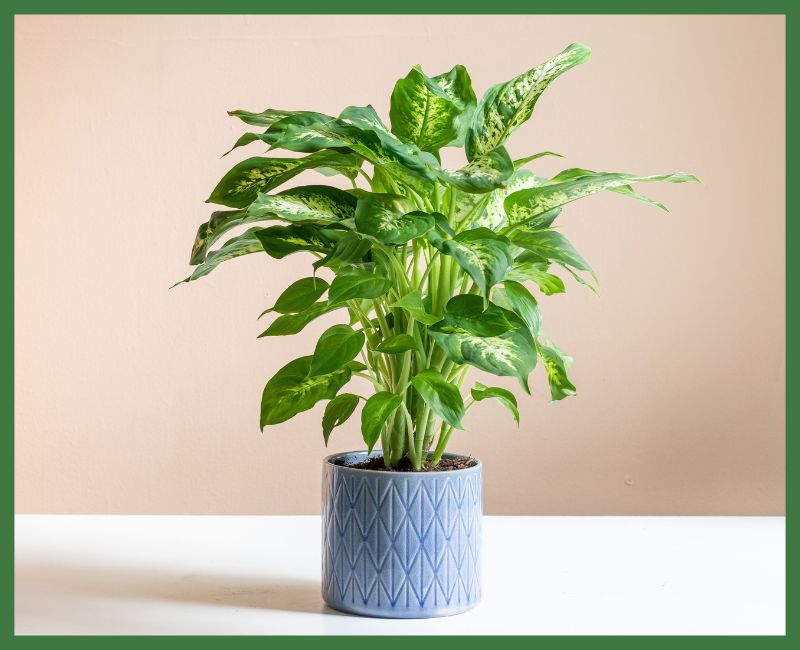
This popular houseplant earned its common name “dumb cane” from its ability to render victims temporarily unable to speak. The large, variegated leaves make it an attractive interior decoration choice, explaining its prevalence in homes and offices.
The danger: Dieffenbachia tissue contains raphides—bundles of needle-sharp calcium oxalate crystals. When bitten or chewed, these crystals explosively release into mouth tissues, causing immediate, intense pain and rapid swelling.
Toxicity level: High, especially for oral tissues.
Symptoms in pets and children: Instant burning sensation, excessive drooling, difficulty swallowing, voice loss, and potentially dangerous throat swelling. In severe cases, airway obstruction requires emergency intervention. Ocular exposure can cause serious eye damage.
Expert advice: This is one plant I absolutely refuse to keep in homes with children or pets. The risk-to-beauty ratio simply doesn’t justify its presence. Countless equally attractive, non-toxic alternatives exist.
3. Philodendron – Trendy Vines with Hidden Dangers

The current houseplant renaissance has made philodendrons Instagram-famous. From heart-leaf varieties to split-leaf monsters, these easy-care plants have colonized millennial and Gen-Z homes worldwide. Unfortunately, this popularity comes with increased poisoning incidents.
The danger: Like their relative Dieffenbachia, philodendrons pack calcium oxalate crystals throughout their leaves and stems. Cats seem particularly attracted to their dangling vines, while dogs occasionally chew fallen leaves.
Toxicity level: Moderate to high.
Symptoms in pets and children: Oral pain and swelling, hypersalivation, vomiting, difficulty swallowing, and decreased appetite. Cats may paw frantically at their mouths. Symptoms usually appear within minutes of chewing.
Expert advice: If you insist on keeping philodendrons, use hanging planters positioned completely out of reach, and immediately clean any fallen leaves. Better yet, choose a pothos look-alike from the safe plant list below.
4. English Ivy – Charming Climber, Serious Risk
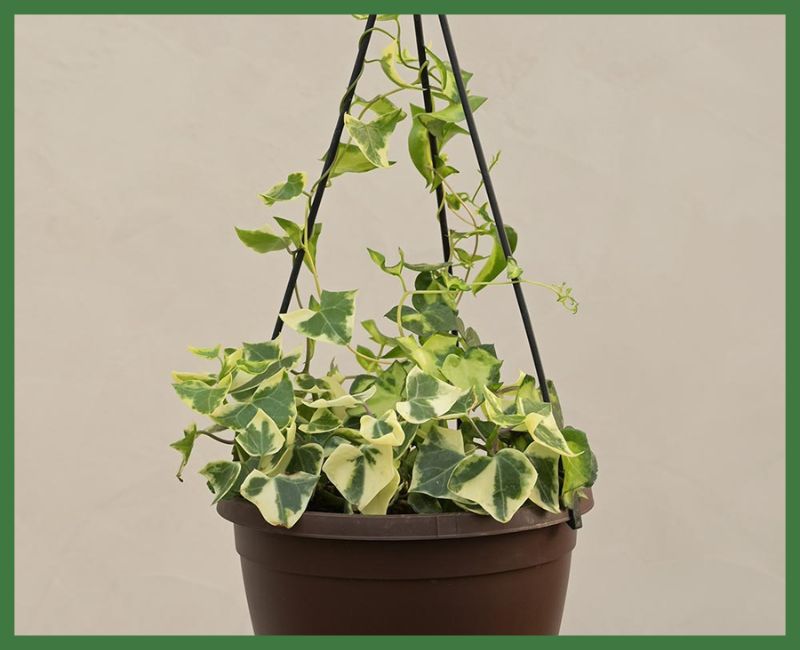
English ivy creates that romantic, cottage-garden aesthetic everyone loves. It gracefully climbs walls, trails from hanging baskets, and provides evergreen ground cover. But those attractive trailing vines practically invite interaction from children and pets.
The danger: The entire plant contains triterpenoid saponins, with berries being particularly concentrated. These compounds damage cell membranes and can cause serious gastrointestinal distress. Skin contact can trigger allergic dermatitis in sensitive individuals.
Toxicity level: Moderate.
Symptoms in pets and children: Abdominal pain, vomiting, diarrhea, hypersalivation, and skin irritation. Large ingestions can cause weakness, muscle spasms, and breathing difficulties.
Expert advice: As someone who has removed countless English ivy infestations, I recommend avoiding it entirely. It’s invasive in many regions, difficult to control, and the berries remain toxic even when dried.
5. Peace Lily – Elegant Blooms Hiding Painful Crystals
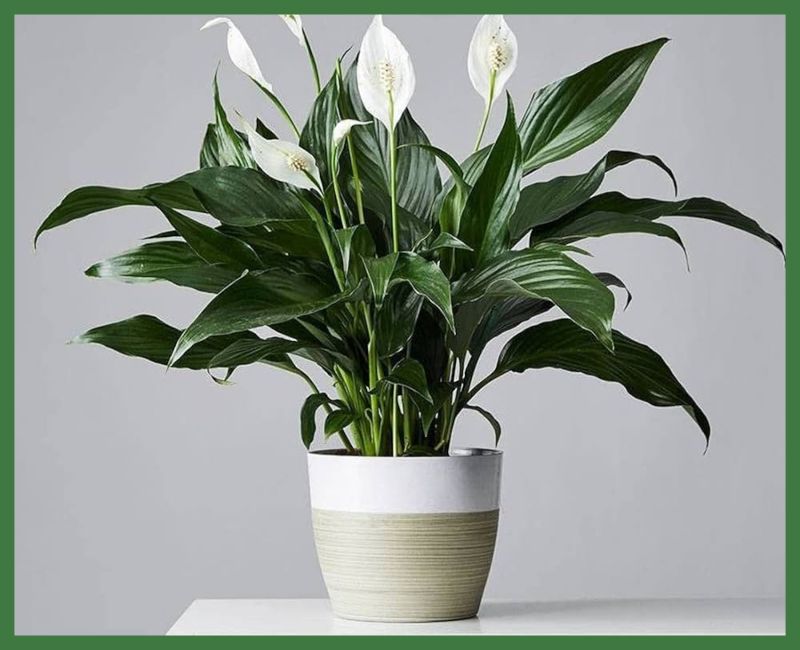
The peace lily’s white spathes and glossy green leaves make it a popular gift plant and office staple. It tolerates low light and requires minimal care—qualities that have made it ubiquitous in indoor spaces.
The danger: All parts contain calcium oxalate crystals. While peace lilies are technically not true lilies (which are even more toxic to cats), they still pose significant risks.
Toxicity level: Moderate.
Symptoms in pets and children: Immediate oral irritation and pain, drooling, difficulty swallowing, vomiting, and decreased appetite. Cats are particularly susceptible and may exhibit pawing at the mouth and face.
Expert advice: The peace lily offers no advantages that can’t be found in safer alternatives. For similar aesthetic appeal without toxicity, consider a prayer plant or African violet.
6. Foxglove – Pharmaceutical Plant, Garden Poison
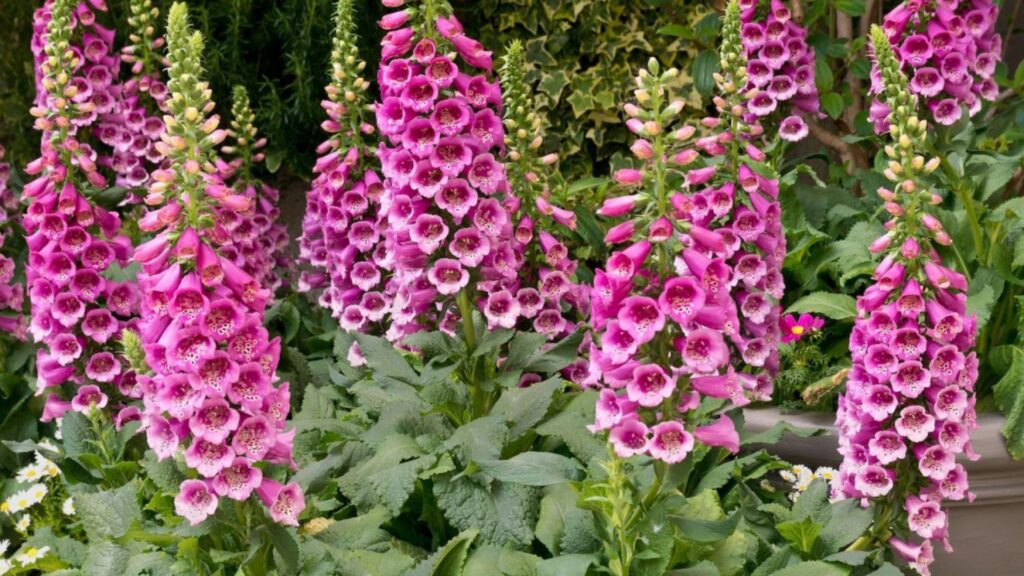
Foxglove’s dramatic spires of tubular flowers create vertical interest in cottage gardens. These biennial beauties self-seed readily and naturalize in shaded areas. Ironically, while foxglove provides digoxin for heart medication, it’s extremely dangerous when consumed directly.
The danger: The entire plant contains cardiac glycosides, with concentrations remaining high even in dried plant material. These compounds accumulate in the body, meaning repeated small exposures can build to toxic levels.
Toxicity level: Extreme.
Symptoms in pets and children: Nausea, vomiting, diarrhea, abdominal pain, irregular heartbeat, hallucinations, tremors, seizures, and potentially fatal cardiac arrest. Symptoms may be delayed several hours after ingestion.
Expert advice: If you garden with foxglove, always wear gloves during handling. Never compost it where animals might dig. Consider whether the beauty justifies the risk, especially if you have curious pets or children who access your garden.
7. Sago Palm – Prehistoric Plant, Modern Danger
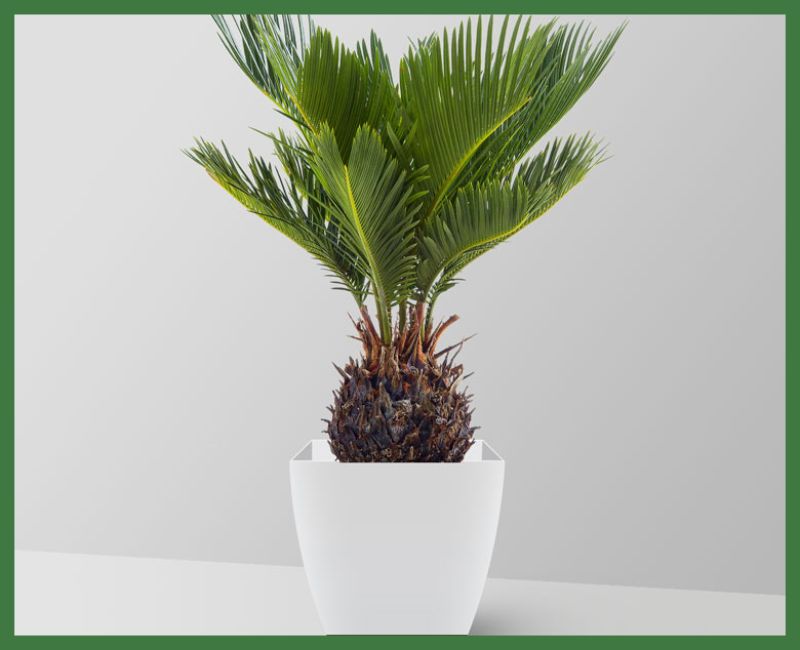
Despite its common name, the sago palm isn’t actually a palm—it’s a cycad, a primitive plant group predating dinosaurs. These architectural specimens have become landscaping favorites in warm climates and popular indoor plants elsewhere.
The danger: Every part is toxic, but the seeds contain the highest concentration of cycasin, a potent hepatotoxin. Just one or two seeds can cause liver failure in dogs. The mortality rate exceeds 50% even with aggressive veterinary treatment.
Toxicity level: Extreme, especially for dogs.
Symptoms in pets and children: Initial symptoms include vomiting and diarrhea within hours. The second, more dangerous phase occurs 24-72 hours later: lethargy, jaundice, seizures, liver failure, and often death. Immediate veterinary intervention is critical.
Expert advice: As a gardener who values both aesthetics and safety, I cannot in good conscience recommend sago palms for any property with pets. The risk is simply too catastrophic. If you inherit a landscape with established sagos, removal is the safest option.
8. Pothos – Devil’s Ivy Lives Up to Its Name

Pothos has become the ultimate beginner houseplant—nearly indestructible, tolerant of neglect, and propagating readily from cuttings. Its trailing vines and heart-shaped leaves have made it a fixture in homes, offices, and commercial spaces worldwide.
The danger: All parts contain calcium oxalate crystals, though typically in lower concentrations than Dieffenbachia. The sap can also cause skin irritation in sensitive individuals.
Toxicity level: Moderate.
Symptoms in pets and children: Oral irritation, drooling, vomiting, difficulty swallowing, and decreased appetite. Symptoms are usually mild but can be severe depending on the amount consumed.
Expert advice: While pothos is less toxic than some other plants on this list, its popularity and accessibility make it a frequent culprit in poisoning cases. If you keep pothos, position it well out of reach and monitor for fallen leaves.
9. Hydrangea – Stunning Blooms, Hidden Cyanide
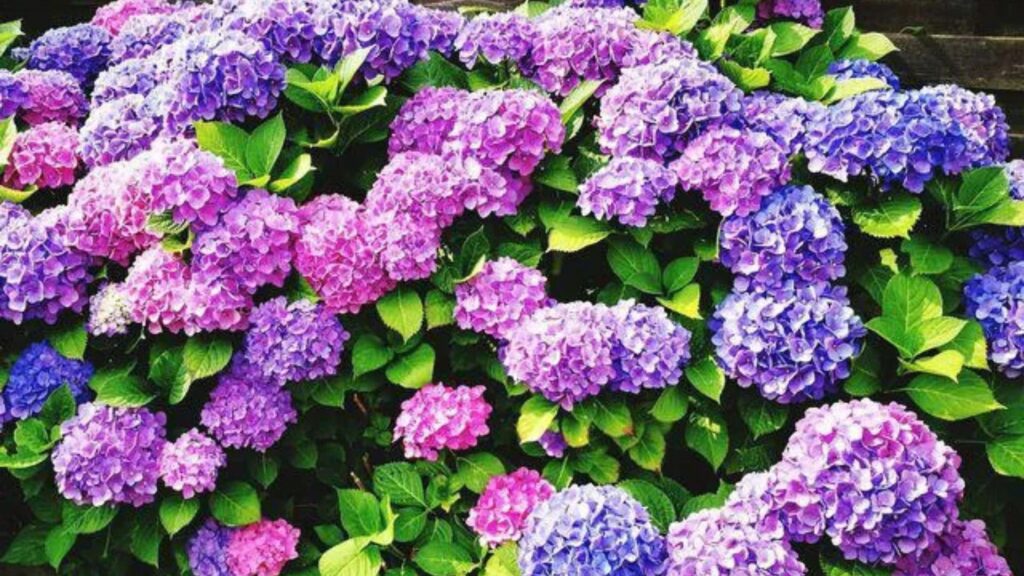
Hydrangeas produce those spectacular mophead and lacecap flower clusters that define summer gardens. Available in stunning blues, pinks, whites, and purples, they’re garden center bestsellers every spring.
The danger: All parts contain cyanogenic glycosides, which convert to cyanide when chewed or digested. While fatalities are rare (the taste typically limits consumption), the potential for serious illness exists.
Toxicity level: Moderate.
Symptoms in pets and children: Rapid onset of stomach pain, nausea, vomiting, lethargy, and dizziness. Large ingestions can cause rapid breathing, elevated heart rate, weakness, and in extreme cases, coma.
Expert advice: Hydrangeas are less dangerous than several other plants on this list because their bitter taste deters consumption. However, young puppies and curious toddlers may not be deterred. Plant them in areas where supervision is easy.
10. Azaleas and Rhododendrons – Garden Staples, Serious Toxins

These spring-blooming shrubs are foundational plants in countless landscapes, particularly in regions with acidic soil. Their spectacular flower displays and evergreen foliage make them seemingly indispensable in garden design.
The danger: All parts contain grayanotoxins, compounds that disrupt cellular sodium channels. These toxins affect the heart, skeletal muscles, and central nervous system. Honey made from rhododendron nectar (known as “mad honey”) has caused poisoning in humans.
Toxicity level: High.
Symptoms in pets and children: Drooling, vomiting, diarrhea, weakness, loss of coordination, slow heart rate, low blood pressure, tremors, blindness, seizures, and coma. Symptoms typically appear within six hours of ingestion.
Expert advice: Given their prevalence in landscaping, complete avoidance is often impractical. Focus on preventing access to plants with low branches that curious pets can reach. Promptly remove all fallen leaves and flowers.
Creating a Safe, Beautiful Garden: Non-Toxic Alternatives
The good news? Stunning, easy-care plants exist that pose no threat to children or pets. Here are my top recommendations:
Safe Indoor Plants That Rival Toxic Favorites
Instead of Philodendron or Pothos:
- Spider Plant: Equally easy to grow, with arching variegated leaves and prolific plantlets. Completely non-toxic and tolerates neglect.
- Boston Fern: Lush, cascading fronds create similar visual impact without any toxicity concerns.
Instead of Peace Lily:
- African Violet: Offers similar low-light tolerance with colorful blooms and no toxicity.
- Parlor Palm: Provides elegant, tropical aesthetic safely.
Instead of Dieffenbachia:
- Prayer Plant: Stunning patterned foliage that’s completely pet-safe.
- Calathea varieties: Bold, patterned leaves rival any toxic plant’s visual interest.
Additional safe indoor options:
- Areca Palm
- Peperomia varieties
- Friendship Plant
- Polka Dot Plant
Safe Outdoor Garden Alternatives
Instead of Oleander or Rhododendron:
- Butterfly Bush: Attracts pollinators, produces masses of flowers, completely safe.
- Weigela varieties: Beautiful spring blooms, multiple colors available, non-toxic.
Instead of Foxglove:
- Snapdragons: Provide similar vertical interest and cottage-garden charm safely.
- Lupines: Dramatic flower spikes in rainbow colors (note: seeds are mildly toxic if eaten in large quantities, but foliage is safe).
Safe flowering options:
- Sunflowers
- Marigolds
- Zinnias
- Petunias
- Impatiens
- Roses
Emergency Response: What to Do When Poisoning Occurs
Despite our best prevention efforts, accidents happen. Quick, appropriate action can save lives.
Immediate First Aid Steps
- Remove any plant material from the mouth immediately. Gently sweep out visible pieces, but avoid triggering additional swallowing.
- Rinse the mouth gently with water. For pets, use a damp cloth to wipe mouth tissues if they’ll tolerate it.
- DO NOT induce vomiting unless specifically instructed by poison control or a veterinarian. Some toxins cause additional damage when vomited back up, and aspiration poses serious risks.
- Collect a sample of the plant including leaves, stems, and flowers if possible. Photograph it as well. Accurate identification enables appropriate treatment.
- Note the time of exposure and approximate amount consumed if known.
When to Seek Emergency Medical Care
Contact emergency services, poison control, or veterinary emergency immediately if:
- Any symptoms appear after known or suspected plant ingestion
- A child or pet consumed any part of a known highly toxic plant (oleander, sago palm, foxglove)
- Breathing difficulties, swelling of the throat, or excessive drooling occurs
- Neurological symptoms appear (seizures, severe weakness, disorientation)
- Irregular heartbeat or rapid breathing develops
Critical Contact Numbers
For pets:
- ASPCA Animal Poison Control Center: (888) 426-4435 (consultation fee applies)
- Pet Poison Helpline: (855) 764-7661 (consultation fee applies)
- Your veterinarian’s emergency number
For humans:
- National Poison Control: 1-800-222-1222 (free, 24/7)
- Emergency services: 911
- Your local emergency room
What to Expect During Treatment
Medical professionals will need to know:
- Exact plant identification (bring your sample)
- Time of ingestion
- Approximate amount consumed
- Symptoms observed
- Pet’s weight or child’s age/weight
- Any pre-existing health conditions
Treatment varies based on toxin type but may include:
- Activated charcoal to absorb toxins
- IV fluids to support kidney function and dilute toxins
- Medications to control symptoms (anti-nausea, heart rhythm stabilizers)
- Monitoring of vital signs and organ function
- Supportive care during recovery
Prevention Strategies: Creating a Truly Safe Environment
Audit Your Current Plant Collection
Walk through your home and yard with this checklist:
- Identify every plant (use plant identification apps if needed)
- Research each plant’s toxicity status
- Assess accessibility to children and pets
- Make removal or relocation decisions
Smart Plant Shopping Guidelines
Before purchasing any plant:
- Check multiple reliable sources for toxicity information
- Consider whether proper placement is realistic in your space
- Ask yourself: “What’s the worst-case scenario?”
- When in doubt, choose the safe alternative
Training and Supervision
- Teach children never to put plants in their mouths
- Train pets to avoid plants through positive reinforcement
- Supervise young children and puppies around all plants
- Create physical barriers when necessary
Maintenance Matters
- Promptly remove fallen leaves, flowers, and berries
- Prune plants before they drop material
- Dispose of toxic plant trimmings where pets can’t access them
- Never compost toxic plants
- Wear gloves when handling potentially toxic species
Final Thoughts from a Professional Gardener
After years of designing gardens and consulting on plant safety, I’ve learned that beautiful, thriving landscapes don’t require compromise on safety. The plants on this toxic list—while undeniably attractive—are simply not worth the risk when excellent alternatives exist.
Your garden should be a source of joy, not anxiety. Every time you step outside or walk through your home, you should feel confident that the green spaces you’ve created are havens for everyone in your family, including the four-legged members.
I encourage you to view plant selection through the lens of harm reduction. Even if you’ve successfully coexisted with toxic plants for years without incident, that doesn’t eliminate the risk—it just means you’ve been fortunate. One moment of curiosity from a pet or child is all it takes.
The transition to a fully safe garden might feel daunting, but it can happen gradually. Start with the most dangerous plants (particularly sago palm, oleander, and foxglove), then work your way through less severe toxins. Each plant you replace brings greater peace of mind.
Remember: gardening should enhance life, not endanger it. Choose beauty that comes without hidden consequences. Your pets, children, and future self will thank you.
References and Additional Resources
- ASPCA Animal Poison Control Center – Comprehensive toxic plant database.
- Pet Poison Helpline – Emergency resources and plant toxicity information
- North Carolina State University Extension – Poisonous Plants database
- University of California, Davis – School of Veterinary Medicine – Common toxic plants

